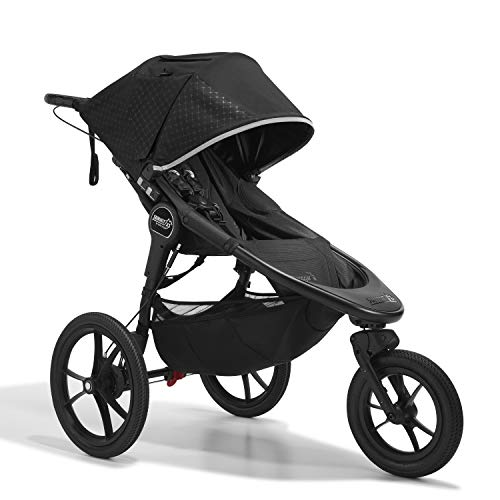Are You Getting The Most From Your Pushchair And Pram?

Understanding Pushchairs and Prams: A Comprehensive Guide
When it concerns baby movement, the terms "pushchair" and "pram" are often used interchangeably. However, Pushchairs And Prams represent distinct types of baby providers, each engineered for specific stages of a kid's advancement and varied adult requirements. This short article looks into the important distinctions between pushchairs and prams, their features, types, and considerations for brand-new moms and dads.
What is a Pushchair?
A pushchair, frequently understood as a stroller in some regions, is developed for children who can stay up individually. Typically, pushchairs are modern, light-weight, and have a seat that can be reclined for added convenience. They may likewise include a five-point harness to make sure the child's safety while on the go.
Secret Features of Pushchairs
- Light-weight Design: Most pushchairs are made from lighter products, making them simple to steer and transfer.
- Adjustable Seats: Many designs use recline alternatives, catering to resting or active positions.
- Canopy: Most pushchairs come equipped with a sunshade or canopy to secure the child from sun direct exposure.
- Storage Space: They normally consist of a lower storage basket, best for holding diaper bags or shopping.
Common Types of Pushchairs
- Standard Pushchairs: Traditional options ideal for children who can sit individually.
- Umbrella Strollers: Lightweight, compact, and easy to fold; ideal for traveling.
- All-Terrain Strollers: Built with larger wheels for off-road abilities and smooth rides on varied surface areas.
- Travel Systems: Combines a stroller and a baby safety seat, permitting parents to move their child effortlessly.
What is a Pram?
A pram, short for "perambulator," is primarily designed for infants, usually from birth till roughly 6 months. Prams are structured with a flat lying position that supports a newborn's anatomy, guaranteeing they are nestled effectively.
Secret Features of Prams
- Flat Bed Design: Prams have a fully flat bed, which is important for young babies who require to lie flat for convenience and health.
- Stylish Aesthetics: Many prams boast vintage or traditional designs, frequently seen with luxurious materials and attractive surfaces.
- Suspension System: Quality prams typically consist of a suspension system to offer a smoother ride over rough terrain.
- Extended Canopy: Extended sun security and rain covers are common.
Common Types of Prams
- Traditional Prams: Featuring a traditional design, these are frequently styled to evoke nostalgia.
- Convertible Prams: These can quickly switch from a pram to a pushchair and normally grow with the child.
- Light-weight Prams: More compact than standard prams, making them easier to transfer.
Distinctions Between Pushchairs and Prams
| Function | Pushchair | Pram |
|---|---|---|
| Use Case | For children who can stay up | For newborns and babies |
| Style | Upright seat with reclining option | Flat bed for resting |
| Weight | Typically lighter | Heavier due to strong construction |
| Compactness | Folds easily and compactly | Might be bulkier, depending upon style |
| Age Range | 6 months to 4 years or older | Birth to roughly 6 months |
| Price Range | More cost effective choices available | Frequently more pricey due to materials and style |
Picking Between a Pushchair and Pram
When choosing in between a pushchair and a pram, numerous elements call for consideration:
- Age of the Child: Newborns need a pram; older babies and toddlers will be more comfortable in a pushchair.
- Lifestyle Needs: Parents who travel frequently may choose light-weight pushchairs, while those looking for convenience in design may lean toward prams.
- Spending plan: Prams can vary from moderately to costly; trustworthy pushchairs can accommodate budget-conscious buyers.
- Storage Space: Consider how quickly the chosen design can suit your cars and truck trunk or home storage.
FAQs
Q1: Can I utilize a pushchair for a newborn baby?
While particular pushchairs are designed with reclining features that might accommodate babies, it is typically suggested to use a pram or specially designed infant car seat for newborns.
Q2: Are travel systems worth the financial investment?
Travel systems can provide convenience by integrating a safety seat and a stroller. They enable seamless shift from vehicle to stroller, which lots of parents find vital.
Q3: How do I maintain my pushchair or pram?
Regularly clean the material, look for mechanical concerns, and lubricate the wheels. Make sure to follow specific care guidelines supplied by the manufacturer.
Q4: What is the weight limit for pushchairs and prams?
Weight limits vary by model: generally, pushchairs accommodate up to 50 pounds, while prams fit babies as much as 30 lbs. Always refer to the producer's standards.
Q5: Is it necessary to have a rain cover for my pushchair or pram?
Yes, a rain cover can safeguard your child from rain and wind, preserving comfort while avoiding damp clothes.
In summary, pushchairs and prams serve essential but unique functions in the mobility landscape for moms and dads and caregivers. Picking the right design depends on the child's age, way of life requirements, and family preferences. By understanding the characteristics, benefits, and differences in between pushchairs and prams, parents can make informed decisions that guarantee convenience and security for their child. Whether walking through the park or navigating busy streets, the perfect movement option is out there waiting.

